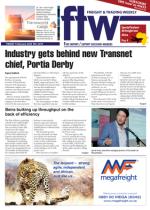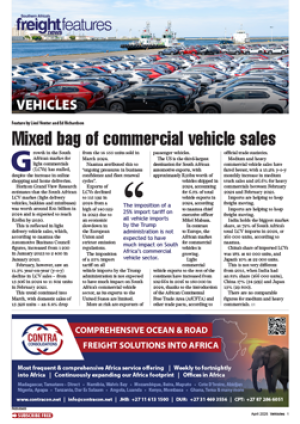The Port of Beira is punching well above its weight despite the devastation it suffered last year when Cyclone Idai swept across the region, concessionaire executive Jan de Vries told a gathering of logistics representatives in Johannesburg last Friday.Speaking at a marketing drive for the corridor which links landlocked markets with the port, the managing director of Cornelder de Moçambique, the company that holds the harbour’s concession for general cargo and containers, said proactive measures had enabled them to withstand Idai destruction.“We closed the port for two days and made sure that our systems were protected. It involved fastening gantry cranes so they could remain in position and stacking containers like pyramids so the wind could pass over it with greater ease.”These measures, in tandem with a host of infrastructural developments and systems upgrades, is helping the port remain ahead of the curve –with data to boot backing up De Vries’s views.“Ten years ago we only had very small feeder vessels, particularly on the container side, calling at our port. Now we have MSC, CMA CGM, Maersk and PIL Shipping, all of the world’s top lines, calling d irec tly.”Compared to the 30 000 TEUs Cornelder managed in its first year, 1998, they equalled that figure in one month last year.“Currently we do about 300 000 TEUs per year but plans are to push that to 700 000.On the bulk side the company is particularly emboldened by its growth in market share.“We used to have no copper. Now we’re sitting on 40% growth in market share out of Zambia and 700% growth out of the Democratic Republic of the Congo (DRC).”They’ were also working hard to expand the 250 000 tonnes of copper ore that Cornelder is currently handling, De Vries said, to 350 000 tonnes.As of the middle of last year, they also started exporting sulphur and have managed to ship 80 000 already.Part of the reason for the port’s growing popularity for bulk ore shipments, De Vries explained, was its proximity to the copper belt areas of the DRC and Zambia in relation to the Port of Durban, more than twice as far away.Being able to deal with bulk commodities like tobacco, fertiliser and maize is also adding to the port’s appeal.“Like copper we had to fight for tobacco. Now we’re by far the biggest exporter of tobacco out of Zimbabwe and other markets, sitting on around 230 000 tonnes of tobacco per annum.”Sensing the potential to gain even more market share, De Vries said an expansion project of 90 000 additional square meterage for bulk and project cargo are in the pipeline.As for the port’s additional facilities – four gantry cranes, two twin-lift cranes, more than 20 reach stackers and at least 35 terminal trackers – they’re in the process of acquiring two RTG cranes that can be remotely operated.“We are no longer experiencing the problems we used to have. We can get a container through the port in a day or less and the size and number of vessels calling at Beira is steadily on the increase.”

